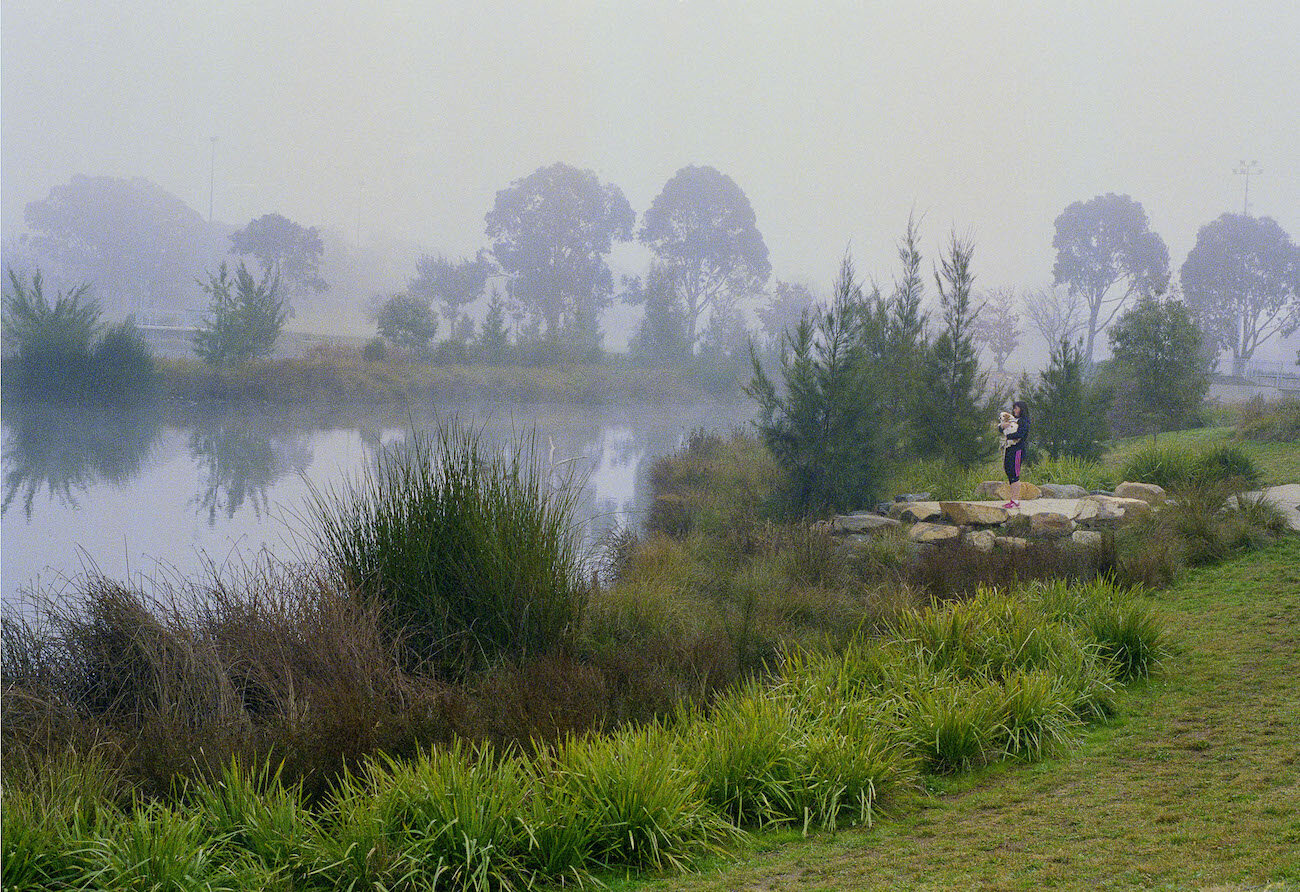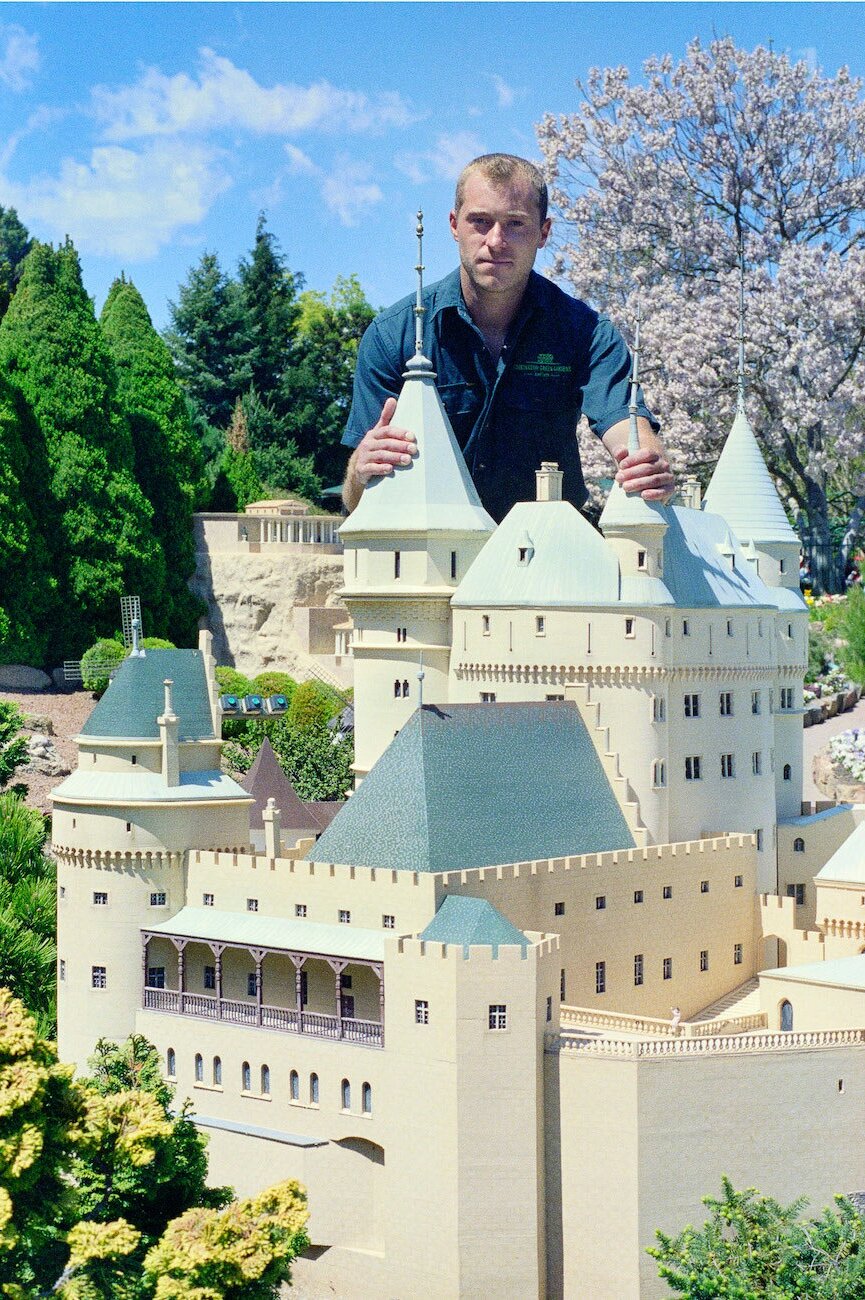The ONE Project
When I asked about 28 photographers to be part of The ONE Project, everyone I asked said yes, without exception.
Everyone was excited and many including myself, were challenged by the one chance, one frame, to make an portrait, where the result will be exhibited publicly.
With this project, each photographer was asked to make one portrait, using one frame of a single roll of film, in NIKON Fm-2 film camera. When they had made their exposure, they passed the camera onto the next photographer. The camera was housed in a box with a blank hand-made book, into which each photographer wrote about their concept and thoughts. The box with camera and book was passed from one photographer to the next, until the roll of film was finished. The first exposure on the roll of film was made in July 2015, with the last exposure made in November 2015. When the roll of film was finished and processed each photographer recieved their image as a digital file to check and to photoshop; if they so wished.
With digital photography we have so much latitude in which to express ourselves, it’s easy and we can do it again and again and again. We can also cover many in-camera mistakes using photoshop afterwards. Each photographer could photoshop their ONE Project file. However, apart from adjustments for colour contrast and some dust spotting, I hoped the integrity of the image remained intact and the images to be seen at exhibition, in its purest form. At the time of writing this I am yet to see all the final images printed, so it will be interesting to see what materialises.
The essence of this project was to develop the concept of a portrait prior to making the exposure and for each photographer to consider all aspects of the exposure; technical, compositional, emotional prior to making the exposure. It requires the photographer and the sitter to connect (without blinking!).
With having one chance to make the portrait, the process became precious.
The resulting portrait has huge inherent emotional and social value, something that in today’s digital world often lacks due to inherently transient nature of digital photography.
“What the Photograph reproduces to infinity has occurred only once: the Photograph mechanically repeats what could never be repeated existentially*”
Each ONE Project portrait was a small finite moment, whose half-life will be far longer than most images taken on that day. Susan Sontag in “On Photography” states that “Photographs furnish evidence”. With this project we had ONE chance to furnish evidence that the sitter was evident. That moment has now passed, never able to be repeated. Whether the photographers involved thought about it that way or not, does not matter.
Millions of images are taken today, with smart phones. Many are shared on the internet and they are consumed at an alarming rate. Hundreds, even thousands of images scroll fleetingly past our eyes each day. Image noise is draining so there is pure joy of holding a printed image in the form of a book or standing in front of a print hung in a gallery, to extend that finite moment.
MY SUBJECT CHOICE
I decided to photograph my parents at their home. When I photograph digitally I usually photograph fluidly, whilst talking with my subject, with little regard for technical aspects or focus. Obviously I have a basic idea of how I would like to photograph the person prior to the portrait, often story-boarding my ideas, but mostly shoot on the run. I tend to shoot on the widest aperture which allows for a minimal depth of focus, always crop in camera. I use auto focus because of my eyesight but also because I’m usually having a conversation with my sitter whilst photographing them.
When faced with the idea of only having one frame to get it right my main worry was focus (the camera is 20 years old and manual focus, and after reading many comments in the the ONE Project book by all the other photographers involved, it seems a common theme.)
I knew I wanted a fairly literal representation of my parents, with simple lighting and pose, shooting wide open like I normally do (f1.8) and in a known environment; their home. I feel I have a very natural portrait of my parents. No setting up, no testing the shot with my DSLR, just did it, kept it simple, tried not to overthink the process.
As creative people our ego plays a huge part in the images we make and though this concept wasn’t a competition I did want to make sure I had an image that stood up against the rest. I feel it does.
EMBRACING THE CHALLENGE
I think in the commercial world we get to hung up about making impossibly beautiful images, that are pin sharp, beautifully photoshopped and make the viewer wonder. It was nice to be reduced to thinking things simply, embrace the challenge and make the portrait more about the actual person than the photographer and/or their photoshop skills!
As I stated earlier I always prefer to shoot on a large aperture so I was worried about focus but after talking to one of the other participants Cathy Laudenbach I realised that this project is so much more then whose image is the sharpest. It was a challenge to create something and then not have to sit for days in front of a computer editing and processing hundreds of images, something we all do in our day to day work.
TRANSPORTING THE CAMERA
It was a dance. Transporting the box which held the camera and the book inside was more tiresome that I thought it could have been, it was almost a performance piece in itself! The thing I loved about it was that I was getting people to meet face-to-face and I enjoyed the time I had with them.
I also loved the fact that at times, I had no idea where, or with whom the camera was.
COLLABORATING
I see the ONE project as a collaboration; yes it was organised by me but I love the sense of community it has created.
Having seen the original files after the roll of film was processed, I very much enjoyed the simplicity of all the portraits and as a body of work they look wonderful. I am excited to get them mounted an hung for the opening.
When considering the photographers to take part of the ONE Project, I knew I wanted a wide range of photographers involved: fine art, press, commercial, portrait and domestic specialists. Luckily for me Canberra was an ideal place to do this project easily, when considering the logistics of getting the camera around to the photographers involved.
I wanted photographers experienced in film photography with the ability to use the Nikon FM2. This may seem like an odd thing to say, given that the camera is the most basic of instruments, albeit a wonderful one!
The photographers involved in The ONE Project are:
(in no particular order)
Madeline Bishop Rowan Conroy Denise Ferris Dan O’Day Kelly Tunney Rohan Thomson Geoff Comfort Katie Kolenberg Jeremy Byrnes Hilary Wardhaugh Lee Grant Geoffrey Dunn George Serras Tim Anger Mark Mohell Jennifer Nagy Lindi Heap Leonie Keogh Samantha Birch Grace Costa Julian Stevenson Sean Davey Candice Ottaway David McLenaghan Cathy Laudenbach Jocelyn Rosen William Hall David Paterson

Jeremy Byrnes

Denise Ferris

Hilary Wardhaugh

Katie Kolenberg

Anonymous

George Serras

David Mclenaghan

Leonie Keogh

Mark Mohell

Madeline Bishop

Kelly Tunney

William Hall

Jocelyn Rosen

Rohan Thomson

Dan O'Day

Geoff Comfort

Cathy Laudenbach

Geoffrey Dunn

Lindi Heap

Tim Anger

Lee Grant

Julian Stevenson

Sam Birch

David Paterson

Sean Davey

Candice Ottaway

Jennifer Nagy

Grace Costa

Rowan Conway